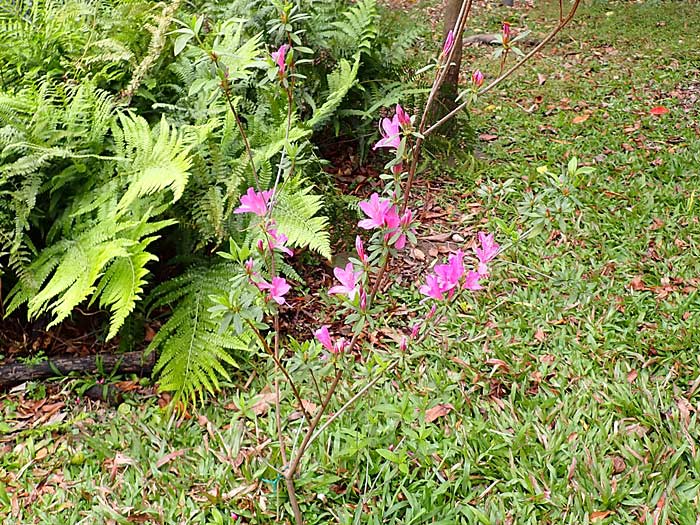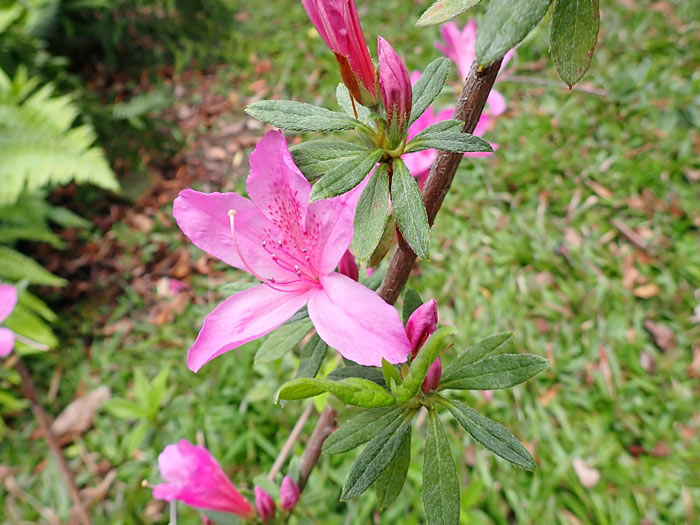Rhododendron kanehirai
The Kanehira azalea is an endemic species of Taiwan. Its narrow, lance-shaped leaves and elegant blossoms display a beautiful range of colors—from soft pink and peach to purple and deep violet-with the upper petals often marked by distinctive purple spots. Highly valued for its ornamental beauty, it is also one of Taiwan’s rarest native rhododendrons and the species with the lowest-altitude distribution among them.
In the wild, the Kanehira azalea was once confined to rocky crevices along the upper reaches of the Beishi River in New Taipei City. However, after the completion of the Feitsui Reservoir in 1984, its natural habitat was submerged, resulting in the extinction of the wild population. Since then, no naturally occurring individuals have been recorded. The plants that survive today are descendants of those transplanted and cultivated before the reservoir’s construction, preserved through the conservation efforts of forestry and botanical authorities.
In recent years, attempts have been made to reintroduce cultivated plants back into suitable habitats, but no new wild populations have yet been established. To prevent the loss of this precious species from nature, active conservation measures remain crucial. Current efforts focus on maintaining the genetic diversity of existing cultivated populations through ex situ conservation programs. These include scientific seed collection, propagation, and population management to safeguard the species’ gene pool. While early propagation relied primarily on cuttings, successful seed-based propagation techniques have since been developed to enhance genetic diversity and long-term viability.
At the National Museum of Natural Science, Kanehira azaleas are planted on the gentle slope near the large lawn in the Northern Lowland Area of the Botanical Garden. They bloom around March each year, their colorful blossoms attracting many visitors who pause to admire and photograph this rare and beautiful native species.

